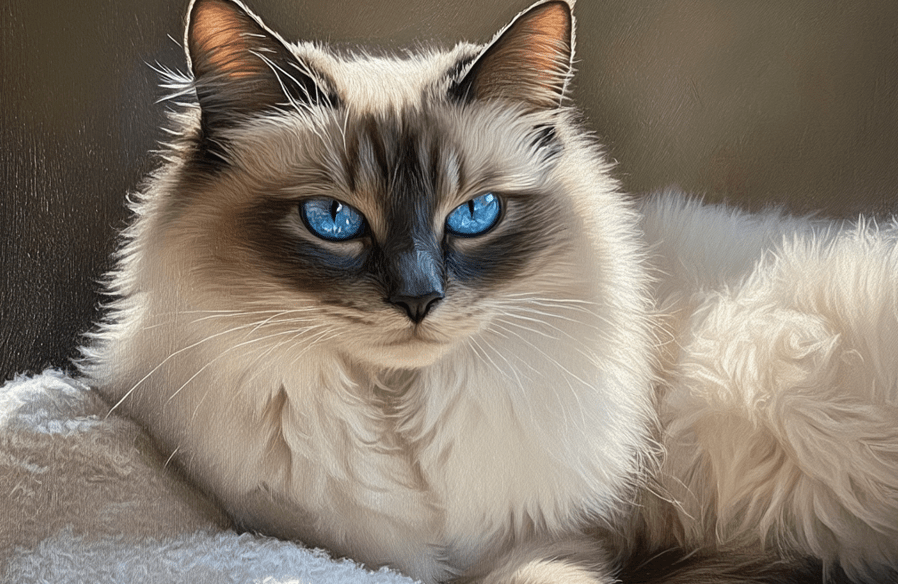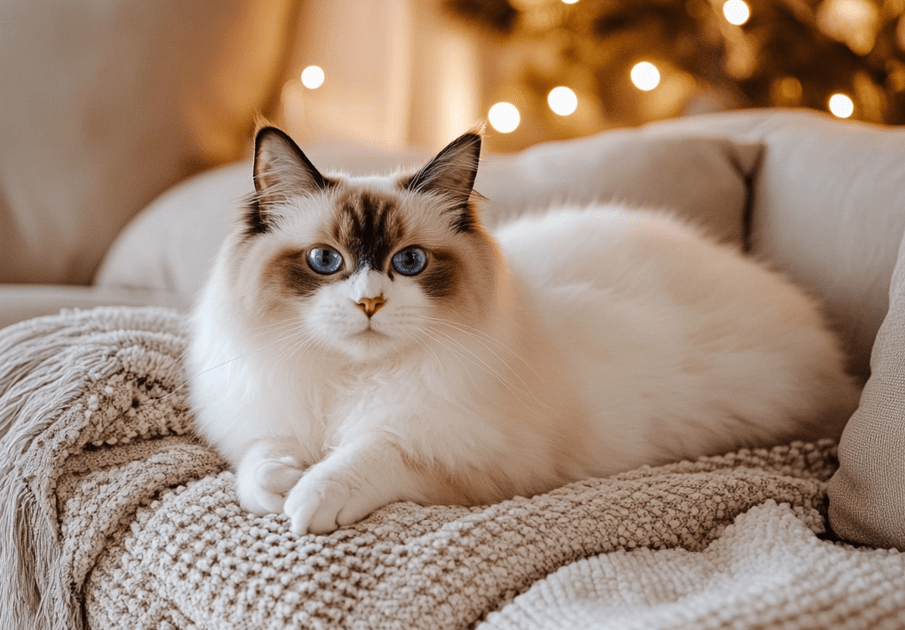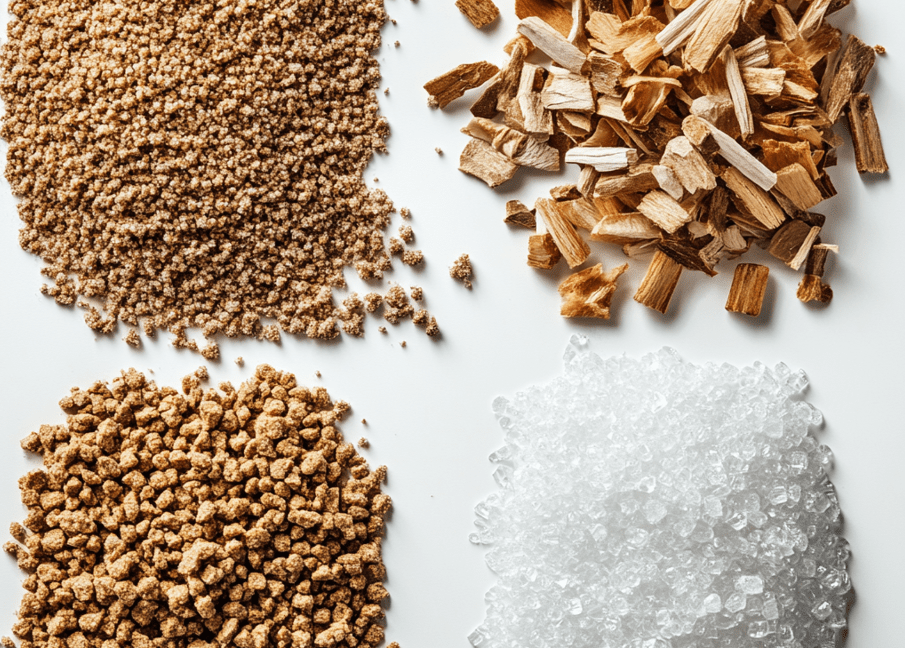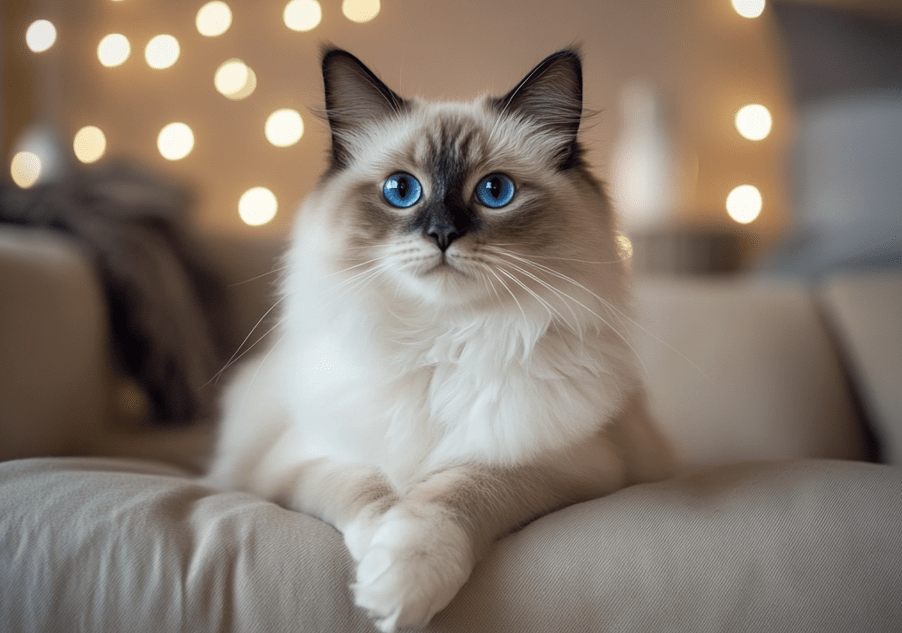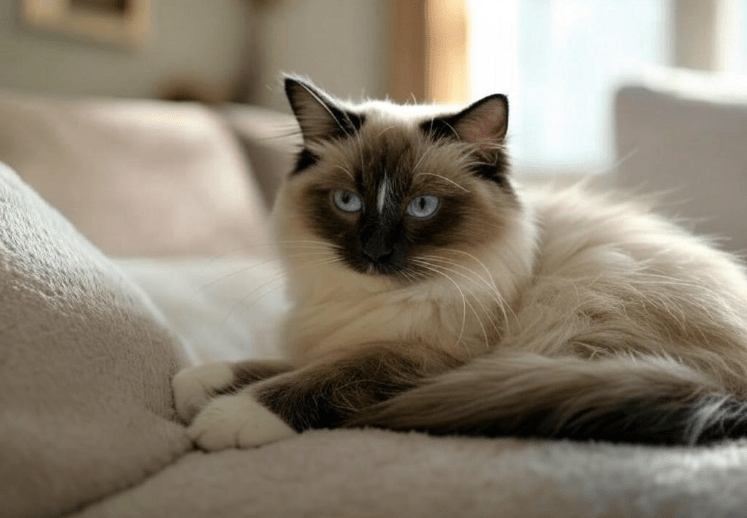
Ragdoll cats are renowned for their stunning, plush coats and captivating blue eyes, but their luxurious fur requires special care, especially for those with white or light-colored coats. Keeping your Ragdoll cat’s coat white and clean is essential for their health, comfort, and beauty. This comprehensive guide provides six expert tips to maintain your Ragdoll’s pristine coat, ensuring it remains soft, shiny, and free from stains. Whether you’re a new Ragdoll owner or a seasoned enthusiast, these strategies will help you keep your feline’s fur in top condition while fostering a strong bond through grooming.
Why Ragdoll Coat Care Matters
Ragdolls are a semi-longhaired breed with dense, silky coats that are prone to matting, dirt, and staining, particularly in white or cream-colored varieties. A clean, well-maintained coat not only enhances your cat’s appearance but also supports their overall well-being. Regular grooming prevents skin issues, reduces shedding, and minimizes the risk of hairballs. For white-coated Ragdolls, maintaining that bright, pristine look requires extra effort due to their susceptibility to stains from dirt, food, or litter.
By prioritizing coat care, you’ll ensure your Ragdoll feels comfortable and confident, while also showcasing their signature elegance. Let’s dive into the six essential tips for keeping your Ragdoll cat’s coat white and clean.
Tip 1: Establish a Regular Grooming Routine
Consistency is key to maintaining a white Ragdoll coat. Regular grooming prevents dirt buildup, reduces matting, and keeps the fur soft and shiny.
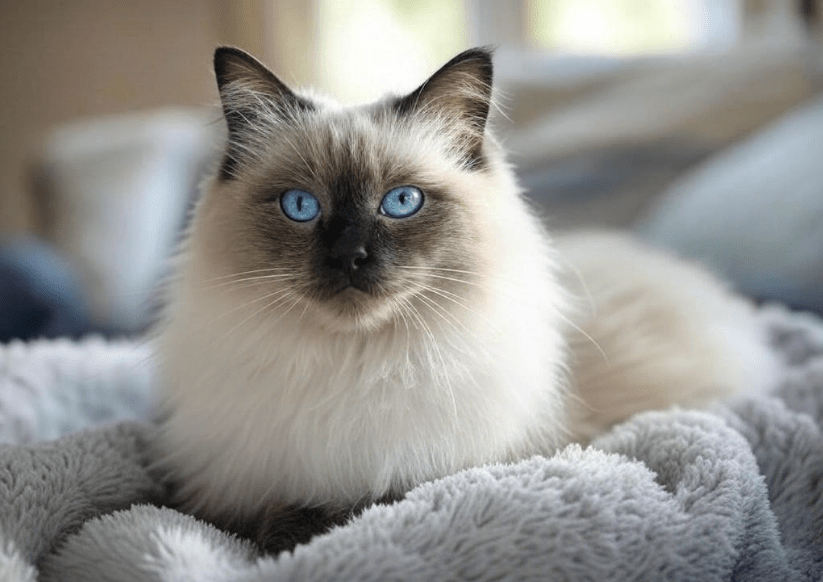
How to Create a Grooming Schedule
Frequency: Brush your Ragdoll 2-3 times per week to remove loose hair and prevent tangles. During shedding seasons (spring and fall), daily brushing may be necessary.
Tools: Use a stainless-steel comb or a slicker brush designed for longhaired cats. Avoid brushes with sharp bristles that could irritate the skin.
Technique: Brush gently in the direction of hair growth, starting at the head and moving toward the tail. Pay special attention to areas prone to matting, such as the belly, armpits, and behind the ears.
Benefits of Regular Grooming
Prevents Stains: Brushing removes dirt and debris before they settle into the white fur.
Reduces Matting: Regular brushing prevents tangles that can trap dirt and oils.
Promotes Bonding: Grooming sessions strengthen the bond between you and your Ragdoll, as they enjoy the attention.
Make grooming a positive experience by offering treats or praise. If your Ragdoll is resistant, start with short sessions and gradually increase the duration.
Tip 2: Bathe Your Ragdoll Strategically
Bathing is a powerful tool for keeping your Ragdoll cat’s coat white, but it must be done correctly to avoid stress or skin issues.
When to Bathe
Frequency: Bathe your Ragdoll every 4-6 weeks, or as needed if their coat appears dirty or stained. Over-bathing can strip natural oils, so avoid washing too frequently.
Triggers: Bathe after exposure to dirt, food stains, or litter dust, which can dull a white coat.
How to Bathe a Ragdoll
Prepare Supplies: Gather a cat-safe shampoo (preferably one formulated for white coats), a non-slip mat, a towel, and a pitcher or handheld sprayer.
Choose the Right Shampoo: Opt for a gentle, pH-balanced shampoo designed for cats. Products with brightening agents, like those containing chamomile or optical brighteners, can enhance那么, enhance the whiteness of a white Ragdoll’s coat.
Set Up the Bath: Fill a sink or tub with lukewarm water. Place a non-slip mat to prevent slipping.
Wet the Coat: Gently wet your Ragdoll’s fur, avoiding the face and ears.
Apply Shampoo: Massage the shampoo into the coat, focusing on stained areas. Rinse thoroughly to prevent residue.
Dry Carefully: Wrap your cat in a towel and pat dry. Use a low-heat pet-safe blow dryer if your Ragdoll tolerates it, keeping the dryer at a safe distance to avoid burns.
Post-Bath Care
After bathing, brush the coat to prevent matting and ensure it dries evenly. Offer treats to reinforce a positive association with baths.
Tip 3: Address Stains Promptly
White Ragdoll coats are prone to stains from food, litter, urine, or environmental dirt. Quick action is essential to prevent stains from setting.
Common Stain Types and Solutions
Food Stains: Wipe wet food from the face and chest immediately with a damp cloth. For dried stains, use a cat-safe stain remover or a mixture of water and a small amount of hydrogen peroxide (diluted 1:10).
Litter Dust: Brush off loose litter particles daily. Use a high-quality, low-dust litter to minimize residue on the coat.
Tear Stains: White Ragdolls may develop reddish-brown tear stains due to eye discharge. Clean daily with a vet-approved tear stain remover or a saline solution. Consult a veterinarian if tear staining is excessive, as it may indicate an underlying issue like allergies or blocked tear ducts.
Urine or Fecal Stains: Clean immediately with a damp cloth and cat-safe shampoo. For stubborn stains, consult a vet to rule out health issues like urinary tract infections.
Preventive Measures
1.Use stainless-steel or ceramic food and water bowls to reduce facial staining.
2.Keep the litter box clean to minimize contact with waste.
3.Trim fur around the hindquarters to prevent fecal matter from sticking.
Tip 4: Optimize Your Ragdoll’s Diet for Coat Health
A healthy diet directly impacts the quality and whiteness of your Ragdoll’s coat. Proper nutrition ensures the fur remains shiny, strong, and less prone to staining.
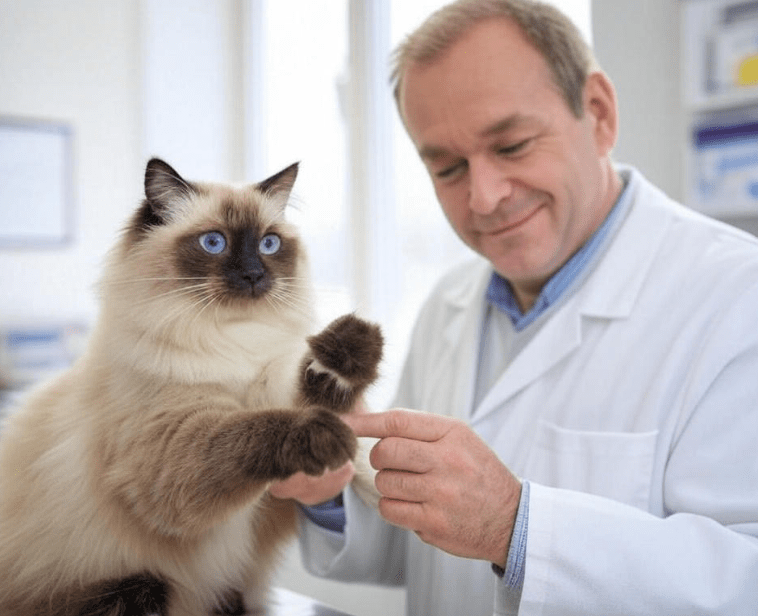
Key Nutrients for a White Coat
Omega-3 and Omega-6 Fatty Acids: These promote a glossy coat and healthy skin, reducing dryness that can attract dirt. Look for cat foods with fish oil or flaxseed.
High-Quality Protein: Ragdolls need protein-rich diets to support hair growth. Choose foods with named meat sources (e.g., chicken, turkey).
Vitamins and Minerals: Biotin, zinc, and vitamin E support skin and coat health. Ensure the food meets AAFCO standards.
Hydration: Adequate water intake prevents dry skin, which can make the coat look dull. Provide fresh water daily and consider a pet water fountain to encourage drinking.
Foods to Avoid
1.Low-quality foods with fillers (e.g., corn, soy) can dull the coat.
2.Excessive treats or human foods, which may cause oil buildup or staining.
Consult a veterinarian to select a premium cat food tailored to your Ragdoll’s needs, especially if they have a white coat.
Tip 5: Maintain a Clean Environment
A clean home environment reduces the risk of dirt and stains on your Ragdoll’s white coat.
Environmental Tips
Vacuum Regularly: Remove dust, dirt, and pet hair from floors and furniture to prevent them from transferring to the coat.
Wash Bedding: Clean your Ragdoll’s bedding, blankets, and cat tree covers weekly to eliminate dirt and oils.
Control Outdoor Access: If your Ragdoll goes outside, supervise them to avoid dirt, mud, or plant-based stains. Wipe their paws and coat after outdoor time.
Use Air Purifiers: Reduce airborne dust and allergens that can settle on the coat.
Litter Box Hygiene
1.Scoop the litter box daily and clean it weekly.
2.Choose clumping, low-dust litter to minimize particles sticking to the fur.
3.Place a mat outside the litter box to trap loose litter.
Tip 6: Monitor Skin and Coat Health
A healthy coat starts with healthy skin. Regular health checks ensure your Ragdoll’s white coat stays clean and vibrant.
Signs of Skin or Coat Issues
1.Excessive scratching or licking
2.Red, flaky, or irritated skin
3.Dull, brittle, or thinning fur
4.Unusual odors from the coat
Preventive Health Measures
Flea and Parasite Control: Use vet-recommended flea preventatives to avoid infestations that can irritate the skin and dull the coat.
Regular Vet Checkups: Schedule annual or bi-annual vet visits to catch skin or coat issues early.
Allergy Management: White Ragdolls may be prone to allergies, which can cause skin irritation and affect coat quality. Work with a vet to identify and manage allergens.
When to Seek Professional Help
If your Ragdoll’s coat remains dull, stained, or matted despite regular care, consult a veterinarian or professional groomer. They can assess for underlying conditions like dermatitis, fungal infections, or nutritional deficiencies. A groomer can also provide deep-cleaning services for stubborn stains or matting.
Additional Tips for White Ragdoll Coats
Use Coat Wipes: Cat-safe grooming wipes are ideal for quick cleanups between baths.
Trim Long Fur: Lightly trim fur around the paws, hindquarters, and belly to reduce dirt accumulation.
Avoid Harsh Chemicals: Never use human shampoos, bleach, or household cleaners on your Ragdoll’s coat, as they can cause irritation or damage.
Invest in a Quality Brush: A high-quality brush designed for longhaired cats makes grooming more effective and comfortable.
Common Mistakes to Avoid
Over-Bathing: Excessive bathing strips natural oils, leading to a dull coat.
Using Human Products: Human shampoos or whitening agents are unsafe for cats and can cause skin reactions.
Ignoring Mats: Neglected mats can trap dirt and lead to skin infections.
Skipping Vet Visits: Undiagnosed health issues can manifest as coat problems.
Grooming Tools Checklist
To keep your Ragdoll cat’s coat white and clean, stock up on these essentials:
1.Stainless-steel comb or slicker brush
2.Cat-safe shampoo (preferably for white coats)
3.Grooming wipes
4.Non-slip bath mat
5.Pet-safe blow dryer (optional)
6.Nail clippers (to prevent scratching during grooming)
7.Tear stain remover (if needed)
Conclusion
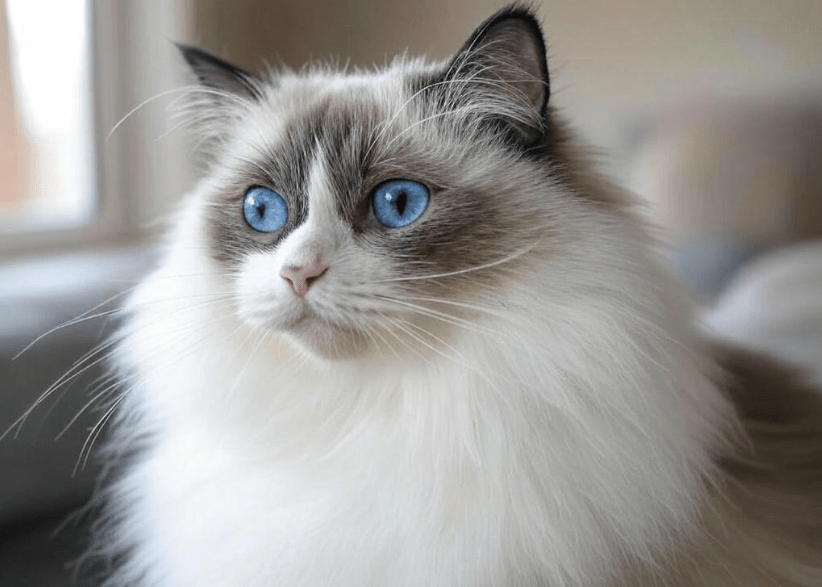
Keeping your Ragdoll cat’s coat white and clean requires dedication, but the results are worth it. By establishing a regular grooming routine, bathing strategically, addressing stains promptly, optimizing diet, maintaining a clean environment, and monitoring health, you can ensure your Ragdoll’s coat remains a dazzling showcase of their beauty. These six tips, combined with patience and love, will help your feline friend shine bright and feel their best.

